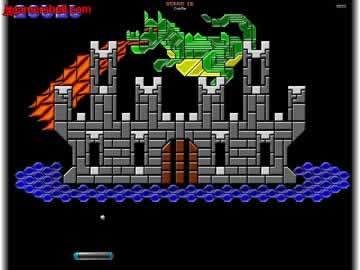

#Dx ball pc Pc#
According to a message of the programmer in the game's leaderboard screen, it was originally dedicated for Michael's wife, so that she can play something in the PC that was similar to her favorite Amiga game MegaBall. Welch designed DX-Ball in 1996 as PC remake of MegaBall which was only available for the Amiga platform.
#Dx ball pc code#
The original author released in 2012 the source code of MegaBall under the Apache license. In addition, both games also include a level editor. This game, originally a vast improvement upon Taito's Arkanoid, has several features that carried on to DX-Ball, such as similar power-ups, a large playfield (compared to other Breakout clone games), and both shares a same level background textures.

#Dx ball pc software#
Trivially, the game's function could be temporarily transformed into a shoot 'em up by using a hidden cheat code that enable the Shooting Paddle power-up at the player's control, at the cost of reduced points.ĭX-Ball draws its main inspiration from the Amiga game MegaBall, programmed by Mackey Software in 1991–1993 for the Amiga. These two power-ups were dropped on the game's final development as it requires a more advanced game engine to render their effects yet their icons still remain in the coding files. In addition, there are also two unused negative power-ups called Gravity Ball and Magnetism, found in the game's internal coding and is a leftover from MegaBall. New additions include FireBall, Set-Off Exploding, Shrink Ball, Split Ball, Super Shrink, and Fast Ball. Most of the power-ups are directly taken from MegaBall with different names.

To alert the player, a loud warning sound will be heard if the player picks up a negative power-up. Neutral powerups can affect the gameplay in both positive and negative ways, depends on the situation, positive ones help in passing the level, while negative ones make the level more difficult. There are three neutral, ten positive and five negative powerups in the game. If this occurs, all unbreakable blocks will eventually replaced with the breakable ones after a minute or so of the ball being stuck in a bouncing pattern. In certain levels, the layout of unbreakable blocks may allow the ball to become stuck in an infinite loop without touching the paddle.
If only a single block remains on a level and it continues to be untouched by the bouncing ball for a minute or so, an electricity sound begins to build and eventually the block is blasted away by a lightning. Various power-ups appear when hitting random blocks, floating downwards towards the bottom and can be picked up by touching it with the paddle. Similarly as Arkanoid and MegaBall, there is an inclusion of power-ups other than extra balls. Clearing all the blocks results in completing the level and going to the next. The game is basically a Breakout clone: the player controls a paddle at the bottom and deflects a single ball, hitting different colored blocks on the top of the screen without having the ball fall below the screen. DX-Ball has been succeeded by three direct follow-ups: DX-Ball 2 (1998), Rival Ball (2001) and Super DX-Ball (2004). A level editor was also made available as well.
#Dx ball pc series#
The game, originally based on an earlier series of Amiga games known as MegaBall, is patterned after classic ball-and-paddle arcade games such as Breakout and Arkanoid. BΔLL, sometimes also written as DXBALL) is a freeware computer game for the PC first released in 1996 by Michael P.Lua error in Module:WikidataIB at line 665: attempt to index field 'wikibase' (a nil value).


 0 kommentar(er)
0 kommentar(er)
